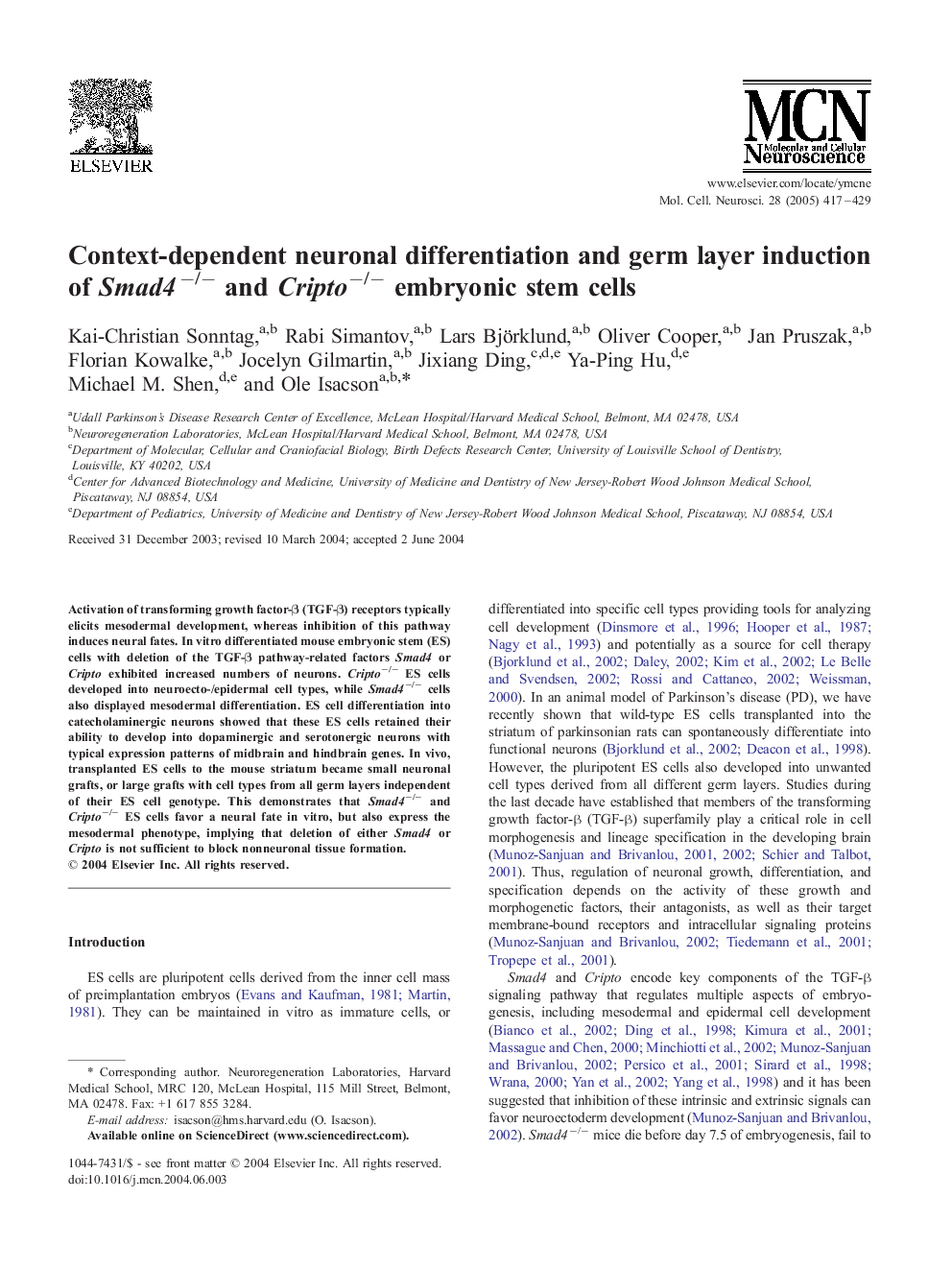| Article ID | Journal | Published Year | Pages | File Type |
|---|---|---|---|---|
| 10956991 | Molecular and Cellular Neuroscience | 2005 | 13 Pages |
Abstract
Activation of transforming growth factor-β (TGF-β) receptors typically elicits mesodermal development, whereas inhibition of this pathway induces neural fates. In vitro differentiated mouse embryonic stem (ES) cells with deletion of the TGF-β pathway-related factors Smad4 or Cripto exhibited increased numbers of neurons. Criptoâ/â ES cells developed into neuroecto-/epidermal cell types, while Smad4â/â cells also displayed mesodermal differentiation. ES cell differentiation into catecholaminergic neurons showed that these ES cells retained their ability to develop into dopaminergic and serotonergic neurons with typical expression patterns of midbrain and hindbrain genes. In vivo, transplanted ES cells to the mouse striatum became small neuronal grafts, or large grafts with cell types from all germ layers independent of their ES cell genotype. This demonstrates that Smad4â/â and Criptoâ/â ES cells favor a neural fate in vitro, but also express the mesodermal phenotype, implying that deletion of either Smad4 or Cripto is not sufficient to block nonneuronal tissue formation.
Related Topics
Life Sciences
Biochemistry, Genetics and Molecular Biology
Cell Biology
Authors
Kai-Christian Sonntag, Rabi Simantov, Lars Björklund, Oliver Cooper, Jan Pruszak, Florian Kowalke, Jocelyn Gilmartin, Jixiang Ding, Ya-Ping Hu, Michael M. Shen, Ole Isacson,
